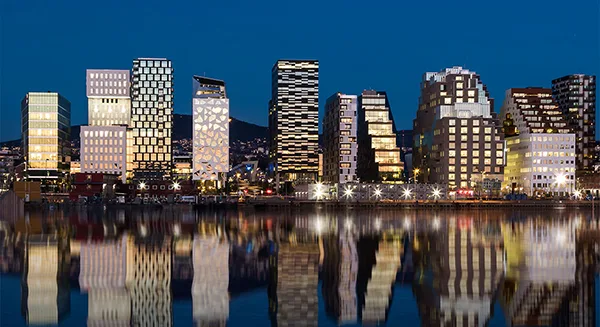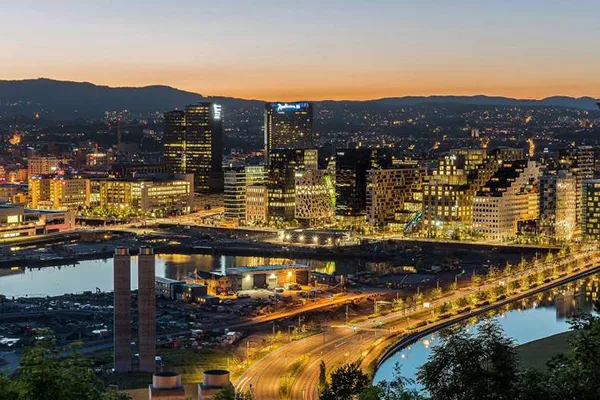
Oslo: Cultural Places to Visit in the Norwegian Capital
Oslo, the capital city of Norway, offers an abundance of cultural attractions that showcase the country’s rich history, art, and heritage. From ancient Viking relics to modern architectural marvels, Oslo’s cultural landscape provides a fascinating glimpse into the heart of Norwegian society. Whether you’re an art lover, history enthusiast, or architecture buff, the city has something to captivate every visitor. In this article, we’ll explore the must-visit cultural landmarks that make Oslo an extraordinary destination in 2025.
The National Gallery
The National Gallery is one of the cornerstones of Oslo’s cultural scene. Located in the heart of the city, the museum houses an impressive collection of both Norwegian and international art. It is home to works from the Norwegian artist Edvard Munch, whose iconic painting “The Scream” is one of the gallery’s most famous exhibits. Munch’s works represent a significant part of Norway’s cultural identity, and the National Gallery provides a thorough exploration of his influence on both Norwegian and global art history.
In addition to Munch, the gallery also boasts works by artists such as Pablo Picasso, Claude Monet, and Henri Matisse. The diversity of the collection allows visitors to explore a wide range of artistic styles and movements, from the Renaissance to modern art. With permanent exhibitions and temporary showcases, the National Gallery ensures there’s always something new to discover, offering an enriching experience for every visitor.
Beyond its renowned art collection, the National Gallery is also a cultural hub, hosting regular events, lectures, and educational programs. These programs invite visitors to engage with art on a deeper level, fostering a greater understanding of the context and stories behind each piece. Whether you are an art connoisseur or a casual visitor, the National Gallery is an essential stop on any cultural tour of Oslo.
Exploring Norwegian Art and History
The National Gallery’s collection provides a unique opportunity to immerse yourself in Norwegian art and history. One of the standout features is the focus on local artists, especially Edvard Munch, whose works continue to inspire and challenge audiences. The museum offers a deep dive into the development of modern Norwegian art, providing insight into the cultural and historical context in which these works were created.
In addition to its focus on Norwegian art, the museum also highlights the influence of international movements on Norwegian artists. From Impressionism to Expressionism, visitors can trace how global trends shaped the local art scene. This interconnectedness between local and global art movements gives visitors a well-rounded perspective on art history, making the National Gallery a must-visit for anyone interested in the evolution of Western art.
For art lovers, the National Gallery is more than just a museum; it is a place to reflect on the role of art in society and how it connects us to our past, present, and future. The museum’s commitment to presenting a diverse array of works ensures that every visitor leaves with a deeper appreciation for the power of art to shape our understanding of the world.
The Viking Ship Museum
The Viking Ship Museum is one of Oslo’s most visited cultural landmarks. Located on the Bygdøy Peninsula, the museum is dedicated to preserving the legacy of the Vikings, who played a pivotal role in shaping Norwegian history. The museum’s centerpiece is the world-famous Oseberg Ship, a Viking burial ship that dates back to the 9th century. This remarkable vessel, along with others like the Gokstad and Tune ships, offers a rare and exceptional glimpse into the Vikings’ maritime culture and their burial practices.
The Viking Ship Museum showcases a fascinating array of Viking artifacts, from weapons to textiles, tools, and personal items that provide a deeper understanding of Viking life. These items, preserved over centuries, offer insights into the daily lives of the Norsemen and their expansive journeys across Europe, Asia, and even North America.
Visiting the Viking Ship Museum is like stepping back in time to the age of exploration and conquest. The ships and artifacts tell a story of courage, exploration, and discovery that shaped the world’s understanding of Viking culture. The museum’s exhibitions go beyond showcasing relics; they also tell the stories of the Vikings’ religious beliefs, social structures, and their relationship with nature and the sea.
Norwegian Heritage and the Viking Legacy
The Viking Ship Museum serves as a vital link to understanding Norway’s cultural roots. The Vikings, known for their seafaring prowess, left an indelible mark on the history of Europe and beyond. The museum offers a comprehensive look at the Viking Age, with artifacts and exhibits that illustrate the Vikings’ impact on trade, exploration, and even warfare.
Through its collection, the museum highlights the Vikings’ ability to adapt to their environment, as well as their remarkable craftsmanship in building ships that could endure harsh sea conditions. The intricate carvings and designs on the ships themselves provide a glimpse into the artistry and skill of Viking shipbuilders, who were pioneers in maritime technology.
The museum is not just a place for history enthusiasts; it also offers an engaging experience for visitors of all ages. Interactive exhibits and educational programs make learning about the Vikings both entertaining and informative. Whether you’re visiting for the first time or returning for a deeper exploration, the Viking Ship Museum never fails to captivate its audience with its rich heritage and historical significance.

The Opera House
The Oslo Opera House is a modern architectural marvel located on the edge of the Oslofjord. Opened in 2008, this state-of-the-art venue serves as the home of the Norwegian National Opera and Ballet. The building’s striking design, created by the architectural firm Snøhetta, allows visitors to walk on the roof for panoramic views of the city and the surrounding fjord. The Opera House has become a symbol of modern Oslo, blending seamlessly with the natural beauty of the fjord and the surrounding cityscape.
Inside, the Opera House boasts world-class facilities, including a main stage and several smaller performance venues. The interior features a stunning combination of wood and marble, creating a warm and inviting atmosphere for audiences. The venue hosts a wide range of performances, from traditional operas to contemporary ballet and cutting-edge concerts, offering something for every taste and interest.
The Opera House is not just a venue for performances; it is also an important cultural hub for Oslo. It hosts exhibitions, festivals, and other cultural events that showcase both local and international artists. With its diverse program, the Opera House provides a platform for creativity and innovation, making it one of the city’s most vital cultural landmarks.
Modern Architecture and Cultural Innovation
The Oslo Opera House is an exemplary model of modern architecture. Its bold design and commitment to sustainability make it a key player in Oslo’s urban transformation. The building’s sloping roof, which encourages visitors to walk up and take in the views, is a unique feature that connects the city with the fjord, symbolizing the fusion of nature and culture in Oslo.
In addition to its architectural beauty, the Opera House is also known for its commitment to sustainability. The building’s design incorporates energy-efficient systems and environmentally friendly materials, reflecting Norway’s dedication to preserving its natural environment. This focus on sustainability makes the Opera House not only a cultural institution but also a beacon of modern architectural practices.
The Opera House’s role in Oslo’s cultural life goes beyond being a performance venue. It represents the city’s embrace of innovation, creativity, and cultural dialogue. As a place where tradition meets modernity, the Opera House is an essential destination for anyone looking to explore Oslo’s contemporary arts scene.
